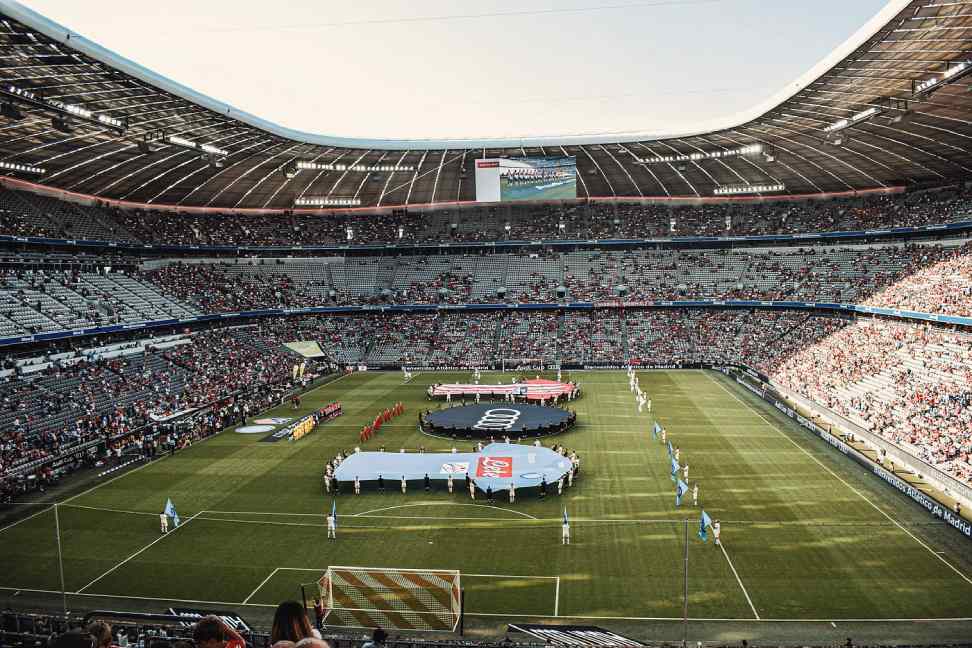12bet Login, Mazaplay, Reddy Book Club, Laser247: In team sports, player collaboration holds the key to success. When players work together seamlessly, sharing ideas and strategies, the team becomes a force to be reckoned with. It is the secret ingredient that can take an average team to an exceptional one. Collaboration brings out the best in each player, creating a cohesive unit that can tackle any challenge on the field.
When players collaborate, a wealth of hidden potential is unleashed. They feed off each other’s energy and enthusiasm, pushing each other to strive for greatness. It is in these moments that magic happens on the field. The team becomes a well-oiled machine, anticipating each other’s moves and acting as one cohesive entity. The joy and excitement that comes from successful collaboration is contagious and motivates the entire team to perform at their peak.
Mastering the Art of Player Collaboration: Unleashing the Hidden Potential
In team sports, the true potential of a team lies not just in the exceptional skills of individual players, but also in their ability to collaborate and work together seamlessly. When players are able to merge their unique strengths and play off of each other’s abilities, the result is a force to be reckoned with. The art of player collaboration is not just about passing the ball or making well-timed plays; it’s about creating a unified front, with each player bringing their own special talents to the table. It’s an exhilarating dance of teamwork and strategy that has the power to unlock hidden potential and propel a team to greatness.
Mastering the art of player collaboration requires more than just technical skills on the field; it demands a deep understanding of each player’s strengths, weaknesses, and preferences. Coaches play a vital role in nurturing this collaboration, but the responsibility also falls on the players themselves. They must be willing to communicate openly, trust their teammates’ decisions, and put the collective goal above personal glory.
When player collaboration is mastered, the possibilities are endless. The team becomes a well-oiled machine, seamlessly moving as one unit, anticipating each other’s moves, and making split-second decisions that leave opponents in awe. Hidden potential is unleashed, and victories become more than just wins on the scoreboard�they are a testament to the power of teamwork and collaboration. So, let us delve into the secrets behind mastering the art of player collaboration and uncover the incredible potential that lies within it.
What is player collaboration in team sports?
Player collaboration in team sports refers to the active cooperation and coordination between teammates to achieve a common goal. It involves players working together, communicating effectively, and supporting each other on and off the field.
Why is player collaboration important in team sports?
Player collaboration is crucial in team sports because it allows teams to maximize their potential and achieve success. When players collaborate effectively, they can combine their individual skills and strengths to create a powerful and cohesive unit. It leads to improved teamwork, better decision-making, and increased chances of winning.
How can player collaboration be improved in team sports?
Player collaboration can be enhanced by promoting open communication, fostering a positive team culture, and encouraging trust and respect among teammates. Coaches can organize team-building activities, provide opportunities for players to bond, and emphasize the importance of selflessness and shared goals.
What are some benefits of player collaboration in team sports?
Player collaboration brings numerous benefits, such as improved team chemistry, increased morale and motivation, enhanced problem-solving abilities, and higher levels of performance. It also leads to a sense of unity and camaraderie among teammates, creating a more enjoyable and fulfilling sports experience.
Can player collaboration have an impact beyond the sports field?
Absolutely! The skills and principles of player collaboration learned in team sports can extend beyond the field and into various aspects of life. Collaboration fosters effective communication, cooperation, and teamwork, which are valuable skills in professional careers, relationships, and personal development.
Are there any challenges to player collaboration in team sports?
Yes, there can be challenges to player collaboration in team sports. Egos, lack of trust, communication breakdowns, and differing personalities or playing styles can hinder collaboration. However, with proper guidance, coaching, and a commitment to teamwork, these challenges can be overcome, leading to stronger collaboration.
How can coaches encourage player collaboration?
Coaches can encourage player collaboration by setting clear expectations, providing constructive feedback, and cultivating a positive and inclusive team environment. They can also create opportunities for players to practice collaboration through drills, exercises, and team-building activities.
Can player collaboration lead to improved individual performance?
Yes, player collaboration can positively impact individual performance. When players collaborate effectively, they can learn from each other, support one another, and push each other to improve. The shared knowledge, motivation, and encouragement within a collaborative team can elevate each player’s skills and performance levels.
What role does trust play in player collaboration?
Trust is fundamental to player collaboration. When teammates trust each other, they feel comfortable relying on one another, sharing ideas, and taking risks together. Trust fosters a sense of security and psychological safety within the team, enabling players to collaborate more freely and effectively.
How long does it take to master player collaboration in team sports?
Mastering player collaboration in team sports is an ongoing process that requires time, effort, and dedication. It varies for each team and individual, depending on their existing skills, experiences, and dynamics. With consistent practice, open communication, and a commitment to collaboration, teams can continually improve and unleash their hidden potential.
Have A Look :-
- What Is An Electric Car?
- 3 Best Electric Scooters To Save Money
- Top 3 Electric Car Charging Companies In The US

